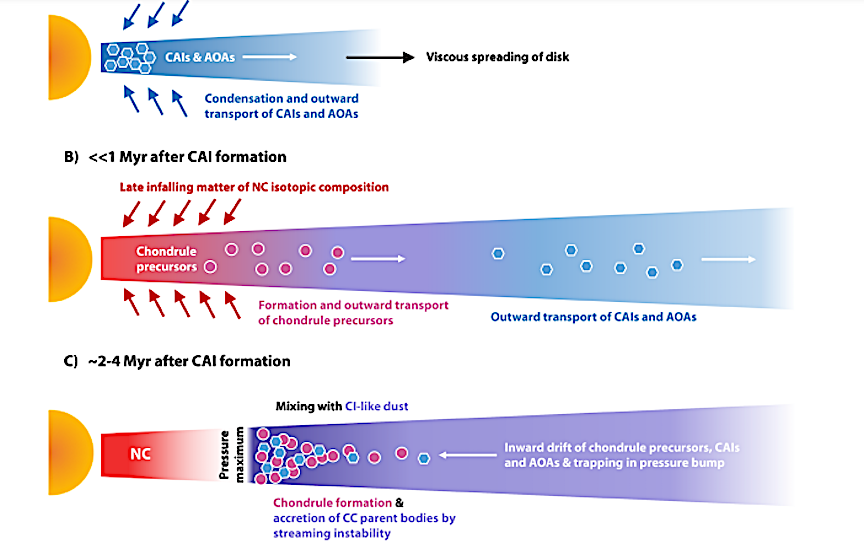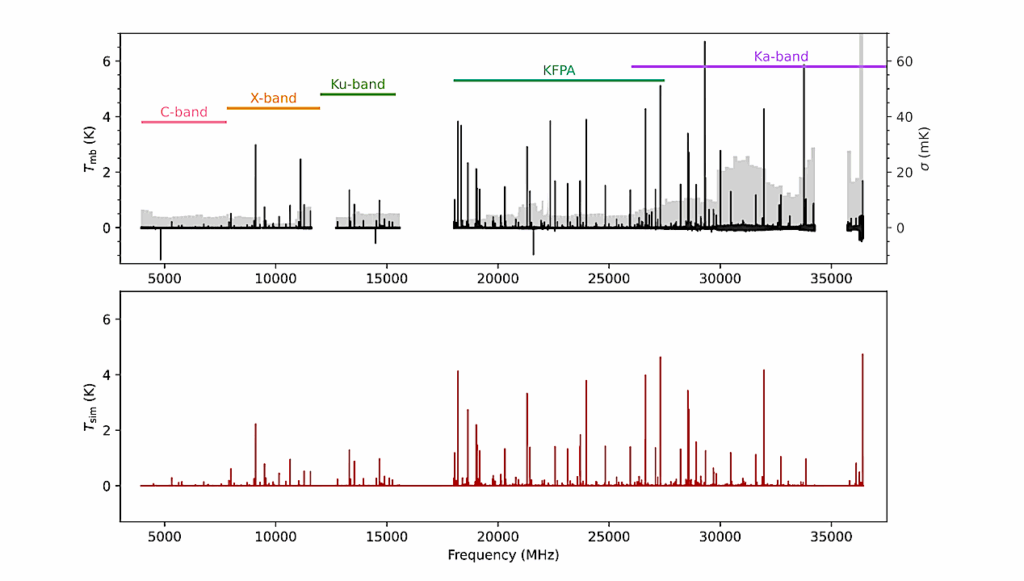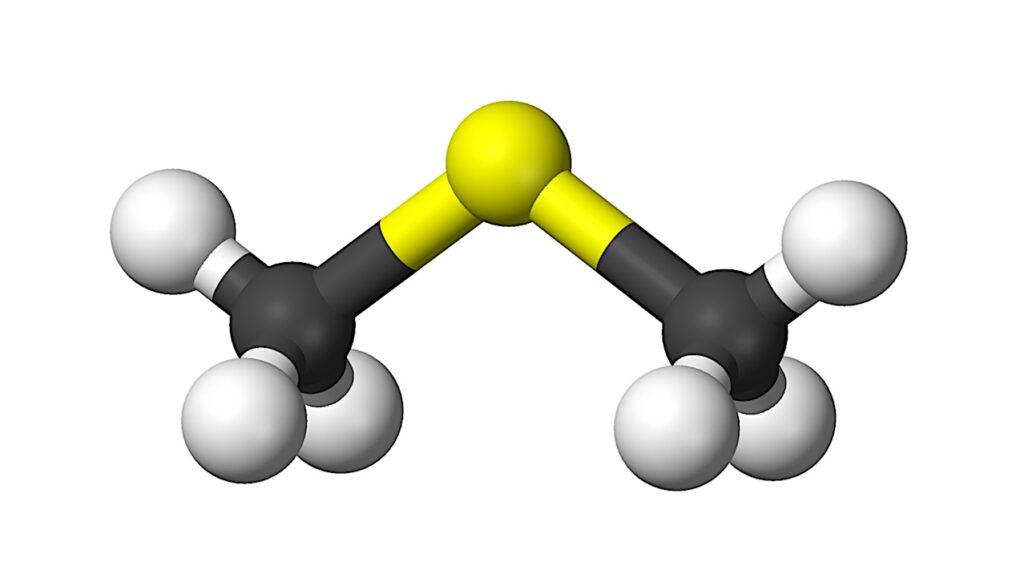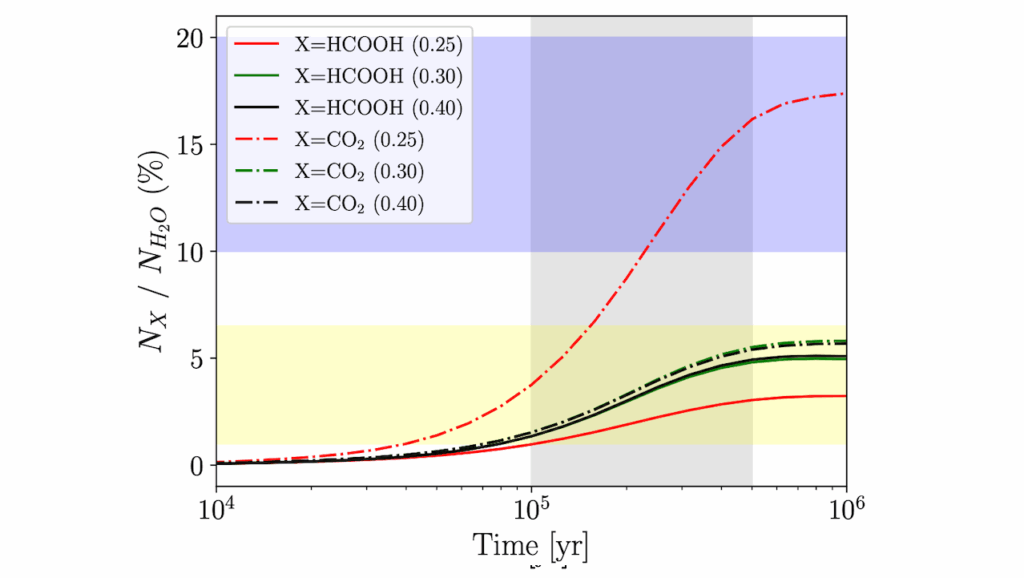Origin Of Isotopic Diversity Among Carbonaceous Chondrites

Carbonaceous chondrites are some of the most primitive meteorites and derive from planetesimals that formed a few million years after the beginning of the solar system.
Here, using new and previously published Cr, Ti, and Te isotopic data, we show that carbonaceous chondrites exhibit correlated isotopic variations that can be accounted for by mixing among three major constituents having distinct isotopic compositions, namely refractory inclusions, chondrules, and CI chondrite-like matrix.
The abundances of refractory inclusions and chondrules are coupled and systematically decrease with increasing amount of matrix. We propose that these correlated abundance variations reflect trapping of chondrule precursors, including refractory inclusions, in a pressure maximum in the disk, which is likely related to the water ice line and the ultimate formation location of Jupiter.
The variable abundance of refractory inclusions/chondrules relative to matrix is the result of their distinct aerodynamical properties resulting in differential delivery rates and their preferential incorporation into chondrite parent bodies during the streaming instability, consistent with the early formation of matrix-poor and the later accretion of matrix-rich carbonaceous chondrites.
Our results suggest that chondrules formed locally from isotopically heterogeneous dust aggregates which themselves derive from a wide area of the disk, implying that dust enrichment in a pressure trap was an important step to facilitate the accretion of carbonaceous chondrite parent bodies or, more generally, planetesimals in the outer solar system.
Jan L. Hellmann, Jonas M. Schneider, Elias Wölfer, Joanna Drążkowska, Christian A. Jansen, Timo Hopp, Christoph Burkhardt, Thorsten Kleine
Comments: 12 pages, 4 figures, 1 table. Accepted for publication in ApJL
Subjects: Earth and Planetary Astrophysics (astro-ph.EP); Geophysics (physics.geo-ph)
Cite as: arXiv:2303.04173 [astro-ph.EP] (or arXiv:2303.04173v1 [astro-ph.EP] for this version)
Submission history
From: Jan Hellmann
[v1] Tue, 7 Mar 2023 19:00:09 UTC (1,493 KB)
https://arxiv.org/abs/2303.04173
Astrobiology








